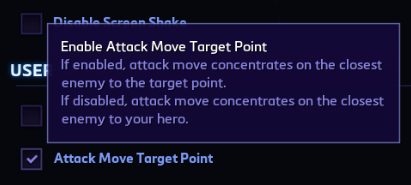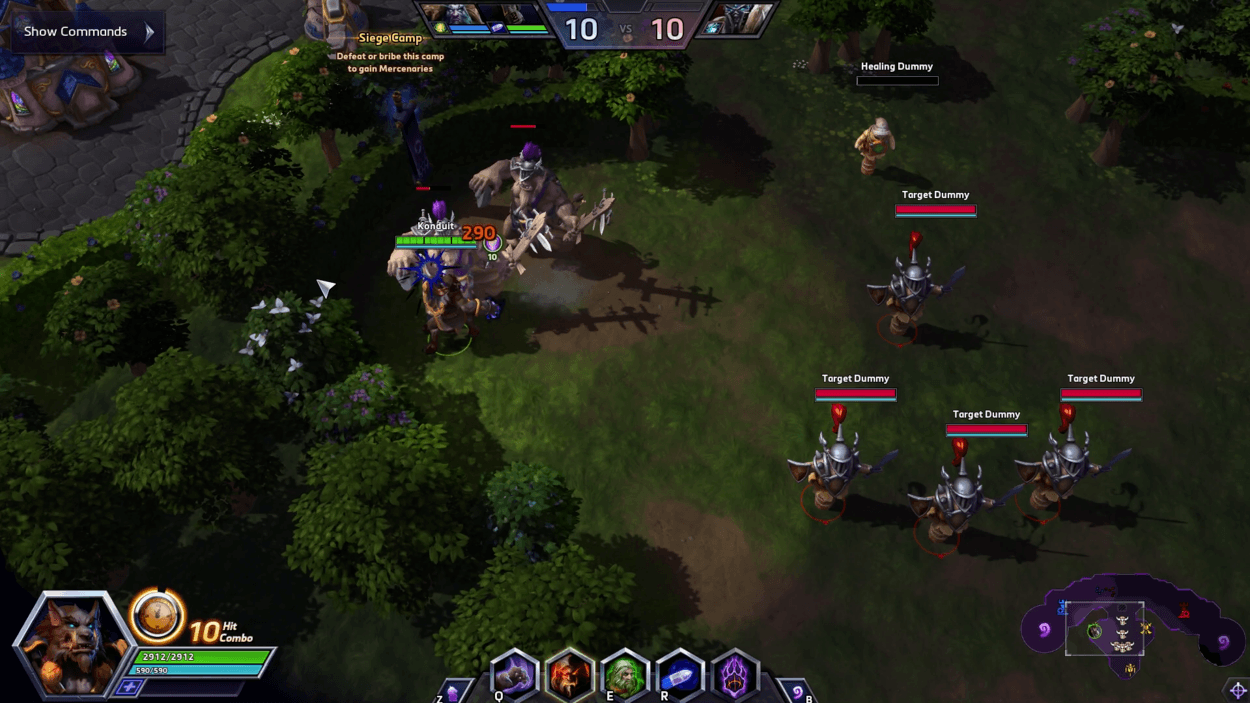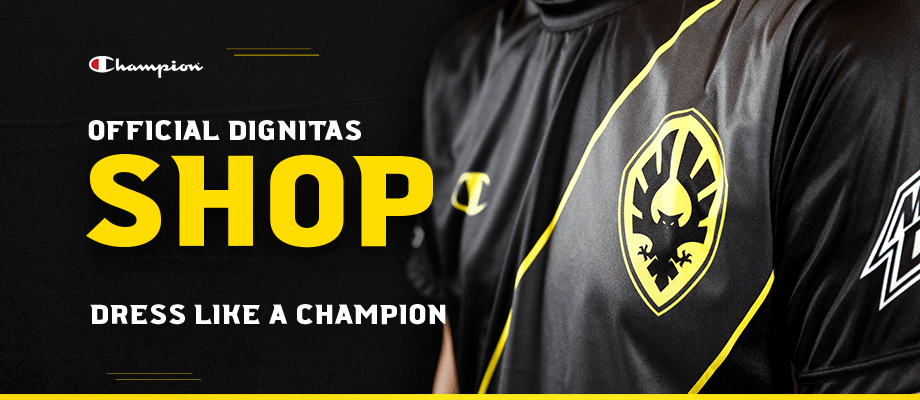Everything You Need To Know About Stutter Stepping in HotS
k0nduit dives deep on stutter stepping in HotS, covering what the technique is, when and why it's useful, and how to do it!
k0nduit dives deep on stutter stepping in HotS, covering what the technique is, when and why it's useful, and how to do it!
Hey there, this is k0nduit from Dignitas, and today it’s time to talk stutter stepping in Heroes of the Storm. A quick note before we get into the article: this article has a video paired with it for gameplay clips and visual illustrations. Check it out!
Normally, when you auto attack a target, your Hero will stand still and continue attacking until the target dies or gets out of range; if the target moves out of range, your hero will follow and attempt to fire off more auto attacks. Stutter Stepping is the act of manually moving your hero in-between each of your auto attacks instead of staying in one place - the technique is no more or no less than that. But, why is stutter stepping so important?
What really made the whole concept of stutter stepping click for me was understanding the idea that your auto attacks have a cooldown, just like any other ability in the game. Think of your auto attack as a short cooldown castable ability that you cast by right-clicking or A-moving (a method which we’ll get into soon). The only wrinkle is that the cooldown for your auto attack is presented in this fancy, slightly more nuanced statistic known as Attack Speed. If my Attack Speed is 1.00 attacks/second, that means the cooldown of my auto attack is 1 second. If my Attack Speed is .5 attacks/second, my auto attack cooldown is 2 seconds, and so on. To find the cooldown of your Hero’s auto attack, simply divide 1.00 by your Hero’s Attack Speed value; for example, after activating Inner Beast (+50% Attack Speed), Greymane’s Attack Speed becomes 1.5, meaning my auto attack has a cooldown of .66 seconds... repeating of course.
Now, think about what you do in a typical game when your basic abilities are on cooldown - you’re going to be constantly moving around in-between ability casts, reading the flow of the fight, positioning to land your abilities when they come off of cooldown, and reacting to your opponents’ attempts to attack you. In essence, you’re using the downtime between each of your ability casts productively. In this same way, you should look to optimize what you’re doing in the time between each of your auto attacks. The only difference is that compared to the longer cooldown of a basic ability, your auto attack’s cooldown is shorter.
Now even though your auto attack’s cooldown is small, making efficient usage of that downtime will yield big rewards for your gameplay. As I mentioned, auto attacking normally stops you in place; stopping allows fleeing opponents to quickly gain distance, it allows chasing opponents to easily catch up to you, and it gives the signal to enemies that they can line up easy skillshots on a stationary target. Stutter stepping, when practiced and applied correctly, will minimize the duration you stay still; this allows you to apply more damage to fleeing opponents before they get out of range, effectively kite chasing opponents (i.e. deal damage while retreating from a pursuer), and better avoid skillshots by presenting a moving target rather than a stationary one. Additionally, stutter stepping facilitates putting out better damage while body-blocking enemies, and is also a key tool in your arsenal when throwing yourself at the core to finish the game - smoothly attacking while running around the core will allow you to get off more damage than you otherwise would be able to before dying.
There are three different methods of stutter stepping which I’ll talk about in this article, but there’s one commonality for all methods of Stutter Stepping: animation canceling.
Every Hero has their own auto attack animation. As it turns out, there is a good bit of each animation that’s actually unnecessary when it comes to dealing damage with your auto attacks, and because we’re trying to optimize our damage output and usage of time, we’re going to skip those parts of the animation. Your character will have an instance in their attack animation after which the damage will connect no matter what you do, and that’s the point in time where you want to issue a move command to cancel the animation. For Greymane, his attack animation can be canceled as soon as the bullet leaves his gun. Do note that canceling your auto attack animation won’t decrease the cooldown between each attack; it simply allows you to use that animation time doing something else, like moving around the battlefield. Animation cancelling is the bread and butter of stutter stepping, so keep it in mind.
The final topic we have to touch on before we get into the stutter stepping input methods is what’s called attack-moving, or A-moving for short. As you know, right clicking on an enemy target will cause your Hero to auto attack it. However, there’s another way to initiate an auto attack, and that’s through the ‘Attack’ command. The default ‘Attack’ command is bound to the ‘A’ key; pressing ‘A’ will change your cursor’s visual, and upon your next left click you will start moving to the location you selected, attacking whatever’s closest to you as you move to that location (note that you won’t aggro neutral mercenary camps, however). Most people quickcast this, so all you have to do is press ‘A’ (or whichever key you’ve bound it to) in order to get the same effect. Finally, I would recommend turning on “Attack Move Target Point” in the Gameplay Options, which will make A-move concentrate on the closest enemy to your cursor rather than the closest enemy to your hero.

Enabling Attack Move Target Point in the Gameplay Options will help you land your attacks even if you misclick.
That’s A-moving in a nutshell, and it’s an important tool in your arsenal. Probably the most manifest example of the usefulness of A-moving is when trying to attack an enemy who has entered a bush. A-moving into the bush will allow you to immediately start auto attacking your target as soon as you gain vision - you don’t have to take a moment to line up a right click on your target, which saves precious time. Another big benefit of A-moving is that if you misclick near your target, you’ll still launch an attack at them! Even if you’re very accurate, this will happen sometimes, like when your target suddenly uses a mobility skill. A-moving can ensure that you’re still getting auto attacks out on the target without missing a beat.
The first method of stutter stepping is what I call "Loose” A-Moving. This method involves alternating your right clicks with A-moves in the same direction of your movement. This is a great way to learn the mechanics of stutter stepping as it’s straightforward to employ from the get-go: you don’t need to move your mouse cursor much and can do things smoothly. You’ll see immediate improvements in scenarios where the target you want to attack is closest to you, but in situations where the target you want to attack is close to other potential targets, “Loose” A-moving won’t get the job done. In order to get the most accuracy out of stutter stepping, you should start practicing one of the next two methods.
The second method is “Strict” A-Moving. “Strict” A-moving involves moving around with your usual right-click, and A-moving directly on your desired target. This gives you perfect accuracy as to who you’re attacking (compared to “Loose” A-moving), as well as all the benefits of A-moving.
The third method is Pure Right-Clicking, which is exactly what it sounds like - you’ll move and select your attack target all with the right-click button, giving you complete accuracy. You don’t get the benefits of A-moving, but some people really like being able to do it all with the same button. Even if you do want to do everything with your Right Mouse Click, I would recommend consciously using A-move when you do want to check brushes and whatnot - it’s just a good strategy to employ, so keep the A-moving tool in mind.
So, which method should you use? I would recommend mastering “Strict” A-moving.This will give you overall the best results in the most situations. The reason that “strict” A-moving is in general a “better” choice is because of the safety net that A-moving gives you: you still start auto attacking if you miss your target, or if your target uses a quick mobility skill, like we discussed before. Oftentimes, moving unintentionally in these situations (if you were targeting your opponent with right click) can potentially put you in a lot of trouble by compromising your positioning. But again, there’s nothing really wrong with Pure Right-Clicking if you’re accurate, and the feel of moving and attacking with the same button can be really appealing for some people.

Finally, it’s worth noting that I often still use Loose A-moving when kiting a lone melee attacker as a ranged character - it comes naturally with backwards movement and is 100% accurate in this context. Do what feels natural and what makes sense to you.
Next, here are some common errors to avoid when stutter stepping: the first mistake is attacking too early. Underestimating your auto attack’s cooldown will cause you to awkwardly stop, which can potentially compromise your positioning. You may even start moving again, sometimes passing over the actual time when your auto attack comes off of cooldown. Get comfortable with your character’s attack speed, as it will stay the same throughout the whole match (attack speed doesn’t scale with level). But if your Hero has an attack speed modifier, like Greymane’s Inner Beast, get familiar with the cadence of each level of attack speed and feel confident quickly transitioning between those speeds if needed. In general, attacking a little late is preferable to attacking a little early as you don’t stop movement for longer than is necessary; you should strive to time it as optimally as possible of course, but it’s something to keep in mind.
Mistake number two is animation cancelling too early. If you move too quickly after starting your attack animation, you won’t get off your auto attack. Your Hero will often have a funny animation for this kind of thing, and you’ll be able to see it clearly. Similarly to the mistake of attacking early, you can completely lose out on a potential auto attack.
The final common mistake is tunnel visioning on stutter stepping and not reading the flow of the fight. Don’t step forward when the enemy is the aggressor in the engagement, or backward if situation calls for you to be on the offensive. Sometimes, you will even need to shift/transition between the two roles over the course of the fight, which will require good game sense in addition to strong mechanics. Stutter stepping in the wrong direction (like if you’re playing on autopilot) can be catastrophic! However, as you get better at stutter stepping, this will become less of an issue - you’ll begin to put more focus on the game state rather than directing all of your mouse movements.
There are a few common misconceptions about stutter stepping that are important to clear up:
The first misconception is that stutter stepping is only relevant for Ranged Auto Attack DPS like Raynor and Valla. This is incorrect! It’s certainly more important for Heroes like Raynor and Valla, but it’s still valuable for mages, spell-damage focused heroes, support heroes, etc. Stutter Stepping will maximize your damage output by allowing you to deal damage while fleeing/keeping up with an enemy while your abilities are on cooldown - the same as with any auto attack DPS. There are often talents that will encourage good usage of auto attacks on every kind of hero, too (e.g. Kael’thas, a mage, has level 7 talent called Sunfire Enchantment that encourages auto attacking after activating his trait).
The second misconception is that stutter stepping is only useful for ranged heroes, but in reality it’s critical for melee heroes as well. For example, Illidan greatly benefits from stutter stepping, which helps him stay in range for additional auto attacks and better solo merc camps. As an aside, stutter stepping is universally applicable for melee and ranged Heroes when capturing merc camps to minimize damage taken. In any case, melee characters can animation cancel as well, and it’s much easier to know when to do so: as soon as you see the damage number pop up on your target, you’re good to issue a command and cancel the rest of the attack animation - ranged characters don’t get that clear and instant visual feedback.
Pilot D.VA’s Attack Speed is 4.00 attacks/second. In the right context, “Loose” A-moving will still allow her to Stutter Step to good effect!
Some heroes with extremely fast attack speeds are thought to be unable to stutter step: pilot D.VA, Tychus, and Kharazim with Deadly Reach active are probably the main ones. However, stutter stepping is technique that can be done at any attack speed, and all of these characters can, in theory, stutter step - but it’s simply too difficult to do reliably. Attempting to do so will in most cases lower your damage output, so you should generally attack your target normally. Kharazim gets some movement speed every 3rd hit, and Tychus often takes Dash at level 1, both of which help out auto attacking while chasing. Stutter stepping continues to be very effective as attack speed scales up, but 4.00 attacks/second is definitely past the point of it being a readily applicable technique. There is one situation, however, where it can be somewhat useful: if you’re fighting a lone enemy, you can, with practice, “Loose” A-Move (which is the easiest option and doesn’t require moving your mouse back and forth) and stutter step. This is difficult to do, and in many cases, it’ll just be better to stand still and auto attack as usual, but keep in mind that it can come up.
The final misconception is that stutter stepping doesn’t increase the damage you deal, it just makes you a little safer by allowing you to dodge skillshots. This is incorrect as well; while stutter stepping doesn’t literally increase your attack damage or your attack speed, it will allow you to get off more auto attacks. You’ll be attacking in situations where you wouldn’t have previously and maximizing the number of attacks that you can fire off before your target escapes your range or when you’re retreating does result in more damage output.
Overall, when stutter stepping, your movements should be smooth, not jerky. Spend some time practicing in try mode with your character of choice to get a feel for their stutter stepping timing and animations. Let your hero auto attack uninhibited for a few seconds to get a sense of their rhythm, then transfer that cadence to your movements. Here are a few exercises to work on in try mode:
1. Starting from your maximum auto attack range, stutter step from the right or left towards the center target dummy in the group of three.
2. Starting next to the center target dummy in the group of three, stutter step while moving away from it to the left or right (the reason we’re hitting the center dummy is to test your accuracy, as you should be hitting that same center dummy rather than the other potential targets nearby).
3. Finish the Siege Camp without getting hit once. (Both as Ranged and Melee Characters)
4. Stutter Step laterally/in a circle around a target Dummy. This can often be the most difficult kind of stutter stepping, as the distance you have to accurately move your cursor can be large. As an aside, Heroes with longer attack ranges require moving your cursor quickly and accurately over comparatively long distances, while melee heroes have the easiest time when Stutter Stepping as their cursor movement is confined to a smaller area.

With disciplined stutter stepping, the Siege Camp’s damage can be completely avoided.
Actual gameplay will present varied and nuanced situations which you of course won’t encounter in try mode; nonetheless, I would recommend to continue trying to Stutter Step in these situations, even if you’re not 100% confident in your ability to do so smoothly. While you might not perform as well in the short term by employing Stutter Stepping wherever you can, you’ll be getting valuable experience and repetitions which will help develop your skills, and you’ll see improvements soon enough.
Learning to stutter step properly will pay dividends for you game-in and game-out, and you’ll find yourself putting out more effective damage in general. It really is a critical technique that will improve your gameplay no matter what role or hero you play...well, except if you’re playing Tracer, Lucio, or Mech D.VA (who can all attack while moving).
The best advice I can give you with regards to stutter stepping is to practice it - and don’t practice until you can get it right, keep practicing until it’s difficult to get it wrong. When Stutter Stepping, don’t rush. Keep a steady rhythm and be disciplined. Your damage output will come at a fixed rate, don’t try to make it come out faster - it’s all about applying that DPS correctly, on the right target, and with patience. Now get out there and put your tap shoes on, it’s time to stutter step!
Like our content? Support us by getting our merchandise in our shop
